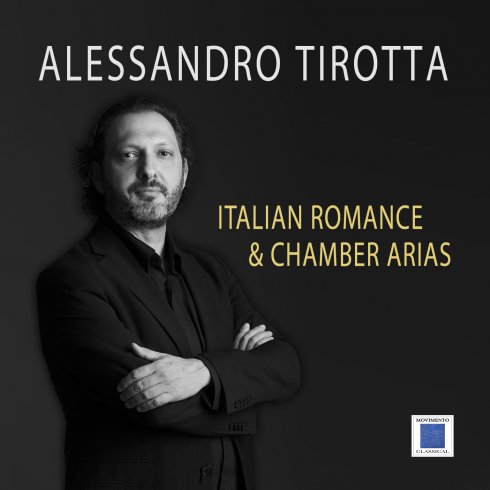

ltallan Romance and Chamber Arlas
ltallan Romance and Chamber Arlas
The Salon Romance and the Chamber Aria are compositional forms which, hand in hand with the production and evolution of opera, have marked the musical history of the "bel paese· They were born as chamber music forms to be performed at home and in the nineteenth-century salons and represented a moment of cultura! emancipation lor the middle class and a kind of affirmation lor the aristocracy, both in public and domestic events, unti! they becarne, in recent decades, an integrai part of the artistic proposals in the various theater programs as well as a stable repertoire in the artistic activity of every professional opera singer. The 19th century therefore saw a substantial growth in the private use of this type of music, in fact more and more homes had a piano, lor direct use and also lor furnishing. The European bourgoise, above ali the ltalian one, saw music as a rneans lor a socia! climb in terms of hegemony and prestige, and cultivating il in its domestic environment, il becomes a need in this sense. Living room, singing and piano became symbols of cultura!, musical growth and complete literacy, and they ali took on this task unti! the early twentieth century, where the advent of the grarnophone and the radio cancelled the active raie played by the amateur and the lover. In ltaly, the predominance of opera meant thai the listener and therefore the public of thai time sought an echo of it in the chamber genre. Among the great opera artists who ventured into the production of charnber operas, Vincenzo Bellini and Gaetano Donizetti certainly occupy a prominent piace. The first artist is known lor his melodie line always clear and full of feeling and tor his in herent phrasing that creates an intimate temperament, free !rom exaggerated blooms and with an emphatic singability. On the contrary, the second artist is characterized by a great production, about 250 cornpositions far one or more voices, with a more operatic and melodie use. Both of them setto music literary texts by some anonymous or unknown authors, but also by famous poets like Romani, Metastasio or Tasso. A separate case is represented by Francesco Paolo Tosti, who was a cornposer dedicateci almost exclusively to the composition of salon romances, aver 400 titles in ltalian, English, French, Neapolitan and Abruzzo, mainly based on texts by important authors like D'Annunzio, Hugo, Negri, Di Giacomo.
Tosti's Romances are songs which maintain an aura of immortality withoutever going out of fashion, thanks to an ever-renewed melodie line, which is based on a rigorous but never cloying compositional structure and which gives the composition perieci adherence to the text. Far this reason they are increasingly present in the concert halls around the world and in the record studios. The main theme is love in ali its forms and facets, but there are also topics of a lighter or more serious nature. lt can be argued thai this type of composition is the ancestor of modern song. The arder of the arias and romances on the album was chosen using the criterion of the creative era and the time available, in the case of compositions with an uncertain or unknown date o birth, without choosing a chronological arder of birth of the composers. Therefore, Vincenzo Bellini opens the succession of selected pieces with Dolente immagine di Fille mia and Vaga luna che inargenti, which are part of the collection "Tre ariette inedite" by the so-called swan of Catania, published by Ricordi. The first piece, as the tille suggests, is a lunerai aria sung in memory of the beloved at her tomb; the second one is an ode to the moon, with enchanting anonymous verses and simple singing and sober and delicate phrasing. Fenesta ca lucive, on the other hand , is a special case. The theme of this song is about the return of a young lover who discovers his beloved has died, an ancient theme dear to popular culture and dating back to around the mid-1600s. The attribution to Bellini is not certain but very likely, and it seems thai he composed the melody before leaving Naples in 1825 due to his failed marriage to Maddalena Fumaroli, his Neapolitan beloved, because of his father's definitive rejection. By the prolific Gaetano Donizetti, this album features Il giglio e la rosa, thai is a Canzonetta also known by the name "Non sdegnar vezzosa Irene", a composition with a very simple character on a light text, and a Romance entitled Leonora, far in conception from "La Favorita", whose protagonist is more demanding with its musical character that is also modest but more similar to an operatic temperament.
There are no other recordings of this Romanza , so lor the performer it would proudly be the "first recorded performance ". The section dedicateci to Donizetti closes with the Chamber Aria Che cangi tempra, that is a part of the "6 Arias tor voice" and piano published by Ricordi and dedicateci to Adèle Appiani and belongs to the compositions of his maturity, in which a full and happy musicality is evident both in singing and in piano accompaniment. The greatest space in this album has been reserved lor Franncesco Paolo Tosti. Unlike his melodies and verses, the composer is well known to musicians and enthusiasts and very unknown to the most. He is the author of the most famous romances of the ltalian salon of the late nineteenth century and is known lor being one of the most appreciated singing masters of his era. Tosti, despite frequenting great opera musicians such as Puccini, Verdi and Mascagn i, was reserved tor a few and never set an opera libretto to music, maintaining his originality lor the time as an exclusive writer of music with an "intimate" character. His romances, written in multiple keys, have been recorded by dozens of singers ali over the world, however the recordings lor dark voice are not very many, and considering that the composer (as has already been said he was also a singer) had a baritone tone, we like to think thai in addition to the musical conception there has always been a dark string singing it in his creative mind. As in every romance, the main theme is obviously love: Non m'ama più, Sogno, L'ultima canzone, Non t'amo più, Malia are always dedicateci to a love chased, experienced or unrequited. Aprile, obviously, is a romance dedicateci to the "seasonof love", and there is also a touch of ironie love discords in "Patti chiari", abstract loves in "Ideale", and materna! love in the poignant "Povera mamma". Each romance represents a story, a state of mind, a torment, a dream, or more simply a light and playful text, and obviously behind each text is full of feeling and emotions thai are amplified by the power of music, never taken lor granted or detached from it, with its eternai, originai and well-structured sirnplicity. The gallant and noble soul o! Sir Francesco Paolo Tosti restores the historical cross-section o! elegance and nobility thai belonged to an important parto! the country, the representation that made ltaly great in the world, the infinite humus o! creative genius that has distinguished the peninsula !rom the resto! the world. The distinct air o! works of art with its culture and its noble feelings echoes in his eternai romances, surviving every era of the history o! humani ty, because man turns in those emotions and those sought-after certainties when he collides with the ephemeral transience o! his earthly existence.
This album, recorded in Vienna in May 2016, a difficult period in my persona! lite, is dedicated to my beloved children, Ennio and Gioele, a source o! inexhaustible love and inspiration, to my parents who accompanied me on my journey of human and musical growth with wisdom and love and to Angela Battaglia, the wonderful woman I love, who supports me in my artistic journey and in everything I do.


